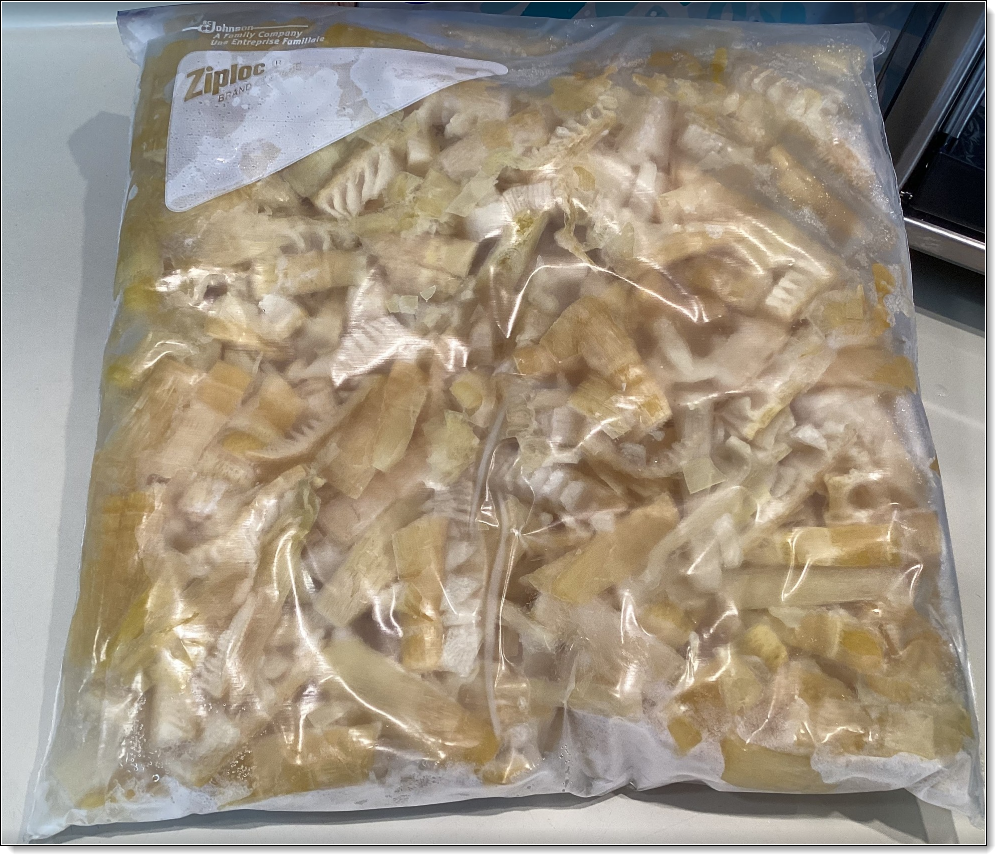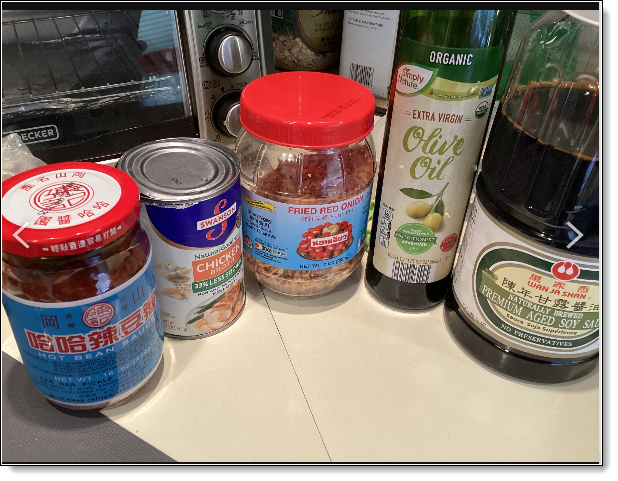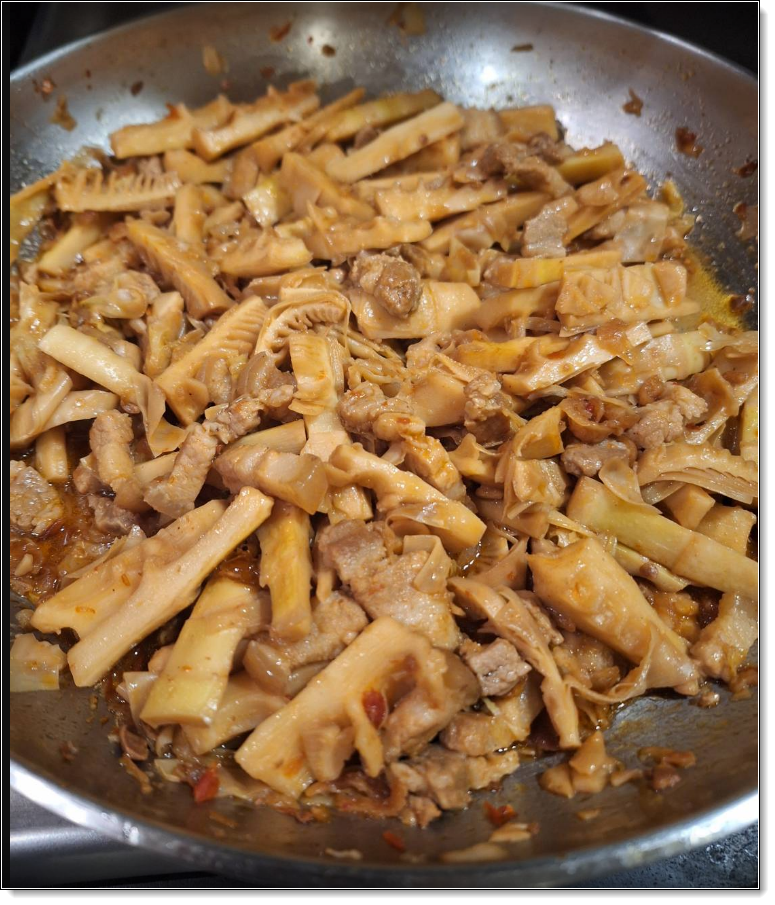
Estimated reading time: 9 minutes
Winnie is an excellent gardener. Over the years we’ve lived in Northern Virginia, her annual vegetable gardens have become larger and more ambitious. By “ambitious,” I mean she’s been more adventurous with the variety of vegetables she’s tried growing. Sometimes, her experiments don’t do so well. Most of the time they do. So I have frequent opportunities to learn, and taste, another new veggie.
One vegetable Winnie hasn’t tried growing is bamboo shoots. But, no matter, because she’s learned where she can get bamboo shoots in the wild. So hunting wild bamboo has become another annual adventure in fine dining.
In The Beginning
We started hunting bamboo shoots a few years ago as part of our adaptation to the Great Coronavirus Pandemic Lockdown. The house we lived in then backed onto county-owned public land. Some of this land is part of a park, the rest preserved as protection of a stream that ultimately feeds into the Potomac River. Which in turn feeds into Chesapeake Bay, so all streams in this area fall under “Protect Chesapeake Bay Watershed” laws.
Before the great lockdown Winnie and I seemed to always be too busy to explore the land beyond our backyard. All we knew about it was that it harbored lots of deer that enjoyed fine dining in Winnie’s gardens. Once the lockdown started, we decided it was time to explore this unknown land since we couldn’t go anywhere else anyway.
So, Winnie and I would head outside after I finished work and explore. We discovered a lovely maze of well-tended hiking trails meandering along the protected streams running through nice woodlands. We also discovered three large strands of bamboo growing among the trees. This bamboo caught Winnie’s attention in a big way.
About Bamboo
Bamboo is an interesting plant. It’s considered to be an ancient species of grass, fast growing, and can grow large. The largest species can grow up to 150 feet tall, fourteen inches diameter, and weight as much as 990 pounds per stalk. It’s also fast growing, with some species clocked at growing up to 47 inches during a 24-hour period. It’s resistant to most plant diseases and can grow well even on marginal land. All this makes bamboo a valued source of building material throughout Southeast Asia.
These growing characteristics also makes bamboo an invasive species in most of North America. Once bamboo takes hold, it’s nearly impossible to eradicate. It reproduces and spreads largely through shoots (rhizomes) that grow up from the root system (runners) which grow and continue to expand.
The particular strands of bamboo we found growing on the county land aren’t a particularly large species. At most, the plants stems (internodes) are only about one and one-half inches diameter with most being smaller. These do grow about twenty to thirty feet tall, so tend to dominate the trees intermixed in these strands.

Bamboo As A Culinary Delicacy
Besides using bamboo as building materials, Chinese people consider the young shoots a fine-dining delicacy. Those bamboo shoots are the young rhizomes pushing up through the soil in the beginning of each growing season. In this area, the season for finding shoots runs between late-March through mid-May.

Once we discovered these strands Winnie announced she wanted to harvest the shoots. Given bamboo’s status as an invasive species I didn’t see any harm in doing this. Eating the bamboo would be an environmentally-friendly way of controlling their growth.
Harvesting Bamboo
The first season, Spring 2020, we were already late in the season for finding bamboo shoots. Not only were most of the young bamboo already too tall/old for harvesting, we discovered we had competition for the shoots. Apparently other people in the area knew of these bamboo strands and also came harvesting. We never saw anyone else, but we could see the signs of cut-off shoots. We were not alone.
In Spring 2021 and again last year we got better at judging the best time for finding shoots. We started going out carrying our day-use backpacks and a heavy kitchen knife. Once we finished our walks we’d head for the bamboo strands to hunt wild shoots. Given how fast bamboo grows, we could expect new shoots every few days. On several memorable hikes Winnie filled both her backpack and mine.
This season Winnie already has her quota, with enough to share with some Chinese friends. She’s also taken some of her friends out to show them the strands – even though this means more bamboo shoot harvest competition in future years.
Preparing the Shoots
After harvest comes the preparation. Back home, Winnie first strips off all the outer leaves, getting down to the actual edible core. What is left reminds me of young corn on the cobs – similar color and shapes. There’s a lot of waste leaves left over, which Winnie later uses in her garden as compost.

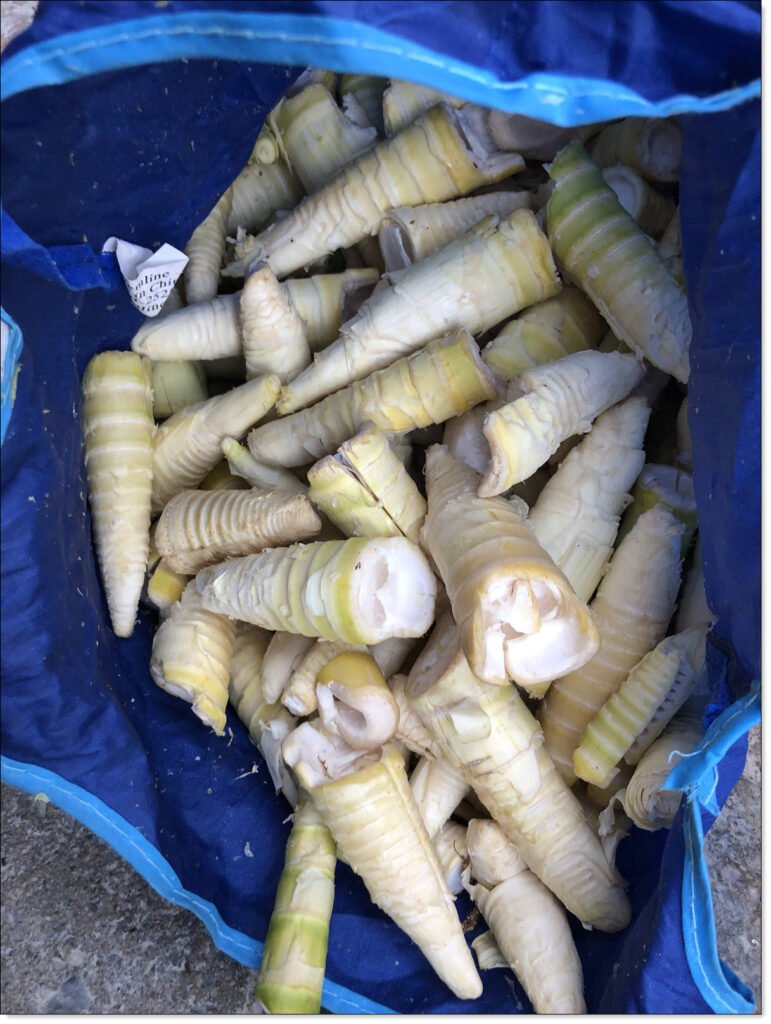
Once she has the leaves removed, Winnie slices the shoots the long way into thin strips. From that point, she prepares the shoots in one of two ways.
Bamboo Shoot Preparation Style One
For the shoots she wants to eat right away, she’ll cut the stips into pieces. Then boils the pieces for a short while and serves hot with some garnish on top. This makes for a nice vegetable side dish. The shoots have a slightly crunchy texture and mildly nutty taste. I have to admit to being a bit skeptical the first time Winnie prepared this dish, but now I enjoy it.
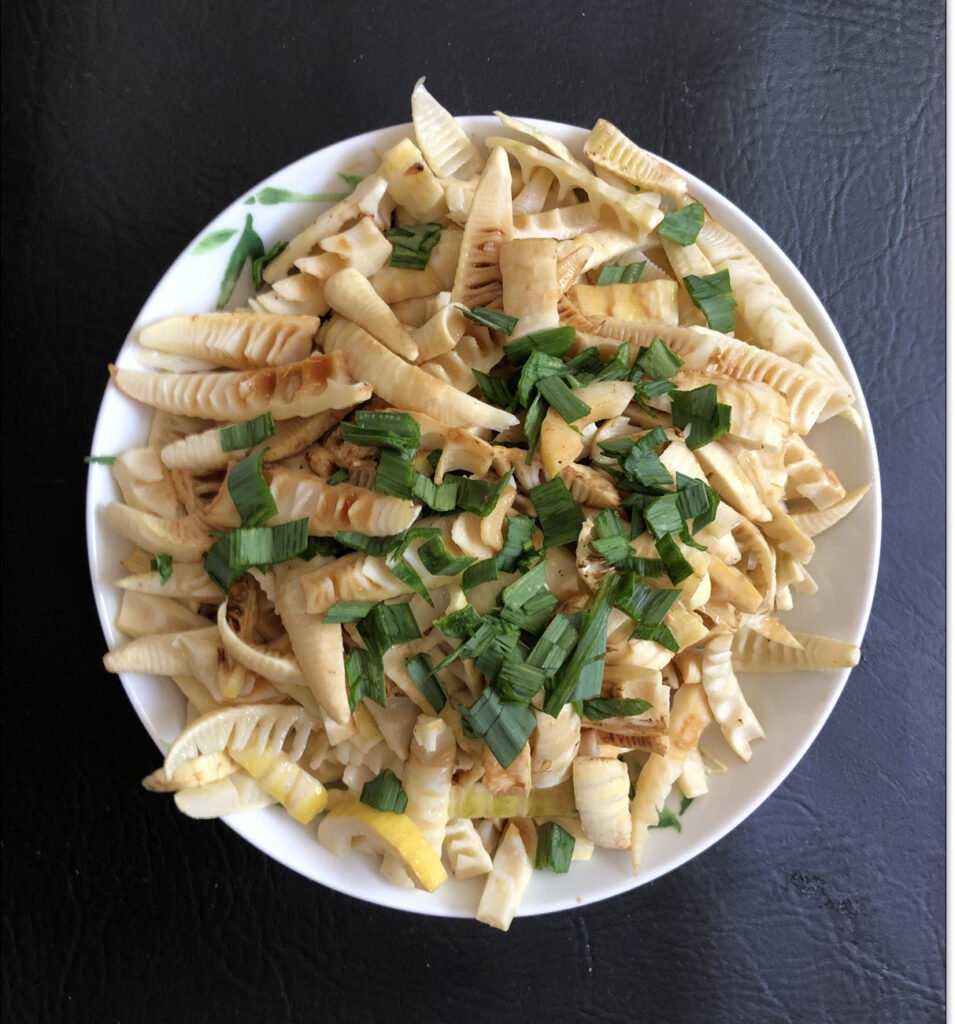
Bamboo Shoot Preparation Style Two
The second way is more interesting. This involves drying bamboo shoots as preservation and serving at some point in the future. This is also a lot more work.
Once Winnie cuts the shoots into long thin strips she finds a sunny spot out in the backyard. She’ll put down some cardboard for cleanliness, then spreads the shoots out to dry. She’ll also lightly salt the undried strips as an aid in preservation. Depending upon the weather and sun, this might take a few days. She drys them until they are leathery-crisp, then packs them away for future dining.
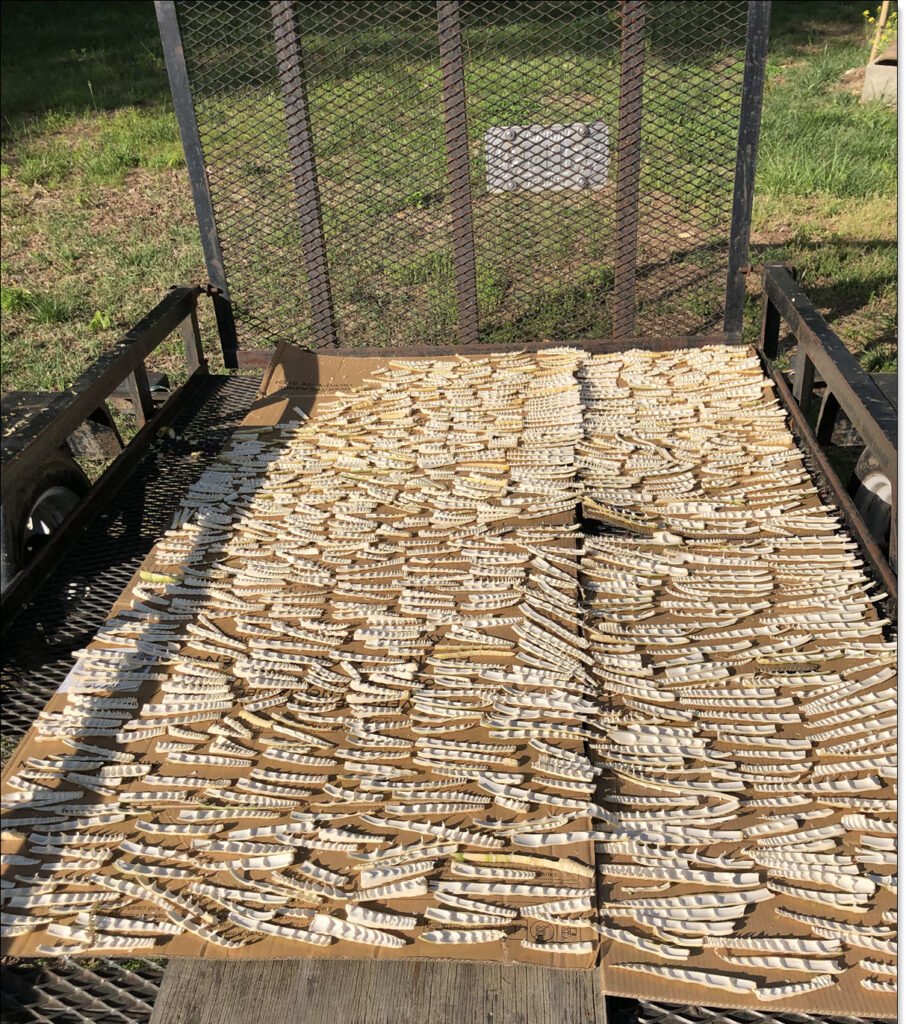
To prepare them, Winnie will soak them for a while. This softens them up and helps leach out the salt. Then, she cuts the strips into smaller pieces and stir fries. These end up a bit tougher than fresh-cooked bamboo shoots with a slightly salty flavor. This past winter we had dried bamboo shoots several times from what Winnie prepared last summer. I suspect we’ll have several bamboo-enhanced dinners this coming winter as well.
Wrap-Up
While I doubt I’d ever pass up a double-cheeseburger for a plate of bamboo shoots, I have earned to like eating them. Even more important, Winnie gets a real joy out of searching for these shoots, harvesting them, then preparing them. So that’s really the most important thing.
Related Posts
Reader Feedback
Do you have a recipe for bamboo shoots? If so, send us a note and share it.
On May 1, 2024, alert reader Rita Tu provided her personal recipe for bamboo shoots, along with some wonderful photos. She granted permission to post them.
Rita Tu:
I would like to share some information with you about cooking bamboo shoots. For option #1, once the bamboo shoots are boiled, cut them to bite size ( just like the ones shown in the picture) and freeze them in the gallon bags before seasoning. Whenever you feel like eating the bamboo shoots, you can defrost them and stir fry shredded shallot first for fragrance, and then add the bamboo shoots with soy sauce, some vinegar and some hot sauce. They are delicious!
